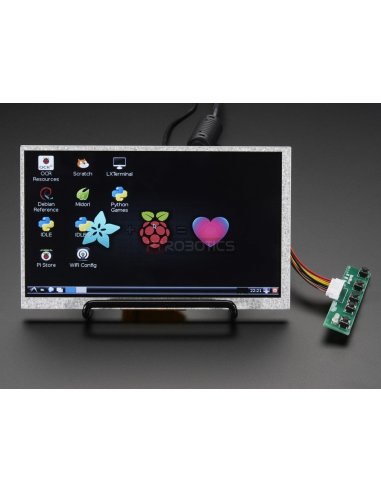-
ARDUINO
- RASPBERRY
- MICRO:BIT
- KITS
-
COMPONENTES
-
Resistências Elétricas
- Kit de Resistências
- Resistências 1% 125mW
- Resistencias 1% 250mW
- Resistencias 1% 500mW
- Resistencias 1% 600mW
- Resistências 1% 1W
- Resistencias 1% 2W
- Resistências 5% 125mW
- Resistencias 5% 250mW
- Resistencias 5% 500mW
- Resistências 5% 1W
- Resistencias 5% 2W
- Resistencias 5% 3W
- Resistências Potência
- Resistências Várias
- Redes Resistencias
- Termistores
- Trimmers
- Trimmers 3296
- Joysticks
- Botões
- Potenciometro slider
- Potenciometros Rotativos
- Potenciometro Multivolta
- Potenciometros Motorizados
- MODULOS
- SENSORES
- ROBÓTICA
- IMPRESSÃO 3D
-
FERRAMENTAS
Ferramenta Eletronica
- Acessórios
- Analisador Logico
- Alicates para Eletronica
- Berbequins
- Caixas Arrumação
- Chaves de Precisão
- Chaves Ajuste
- Extensões
- Fita Isoladora
- Fonte de Alimentação
- kit Ferramentas
- Lupa Eletronica
- Aparelhos de Medida, Multímetros e Outros
- Osciloscopios
- Pinças para Eletrónica
- Pontas de Prova
- Material Soldadura
- Spray de Limpeza
- Tornos e Suportes
- PROMOÇÕES
- CHEQUE PRENDA
HDMI 4 Pi: 7" Display no Touchscreen 800x480 - HDMI/VGA/NTSC/PAL
HDMI 4 Pi: 7" Display no Touchscreen 800x480 - HDMI/VGA/NTSC/PAL
Make a lovely video setup with a 7" screen at 800x480 resolution. For this model, we tried to get an inexpensive 800x480 display that was still high quality and would be good for embedded computing usage.
Descrição
HDMI 4 Pi: 7" Display no Touchscreen 800x480 - HDMI/VGA/NTSC/PAL
Make a lovely video setup with a 7" screen at 800x480 resolution. For this model, we tried to get an inexpensive 800x480 display that was still high quality and would be good for embedded computing usage. The visible display measures 7" diagonal and is a 'raw TTL' display, the model has an extra-bright backlight that looks much better than other 7" TFTs we've tested. We include a driver board with HDMI, VGA and Composite inputs. The setup is very easy to use - simply connect a 5-12VDC adapter to the 2.1mm center-positive DC jack, then connect a digital video source to one of the ports . Voilà, a display!
This version comes in 800x480 instead of the more expensive 1280x800 display. It's also not IPS so it's not good for wide-angle visibility. That said, it does work quite well and at a great price.
There's a little wired PCB with little buttons that let you enter a menu system for adjusting brightness, color and contrast. It tries to auto-detect which input you have and switches to that one or you can 'select' from the menu which to display.
To demonstrate it, we took some photos with the display connected to a Raspberry Pi, but it will also work connected to any device with HDMI, VGA or NTSC/PAL output. It will not work with a device that only outputs DVI (without a DVI to HDMI converter) or SECAM.
For use with a Raspberry Pi we suggest editing config.txt to set the HDMI to 800x480 in case it doesn't detect the resolution properly. You can see our suggested config.txt in the Technical details tab. The easiest way to edit the config.txt is to put the Pi SD card into an every day computer and edit config.txt with any text editor and save.
For use with a BeagleBone Black running Ubuntu/Debian, we found it works when plugged in, no configuration required.
A power adapter is NOT included. You will need to either purchase a 5-12VDC adapter or you can use one you've already got around the house. We show the display on a bent wire stand which is not included.
Technical Details
- Power with 5-24VDC
- 16:10 display ratio
- Resolution: 800 x 480
- Visible area: 154mm x 86mm 16:10
- Display dimensions: 165mm x 100mm x 6mm (6.5" x 3.9" x 0.2")
- Brightness: 400cd/m2
- Contrast: 500:1
- Uses an AT070TN94 display - with a brighter backlight than the AT070TN90 or AT070TN92
- Weight (excluding power cable): 144g
- Not HDCP compatible - it cannot be used with 'secured' HDMI sources
-
Here is our suggested config.txt
# uncomment if you get no picture on HDMI for a default "safe" mode #hdmi_safe=1 # uncomment this if your display has a black border of unused pixels visible # and your display can output without overscan #disable_overscan=1 # uncomment the following to adjust overscan. Use positive numbers if console # goes off screen, and negative if there is too much border #overscan_left=16 #overscan_right=16 #overscan_top=16 #overscan_bottom=16 # uncomment to force a console size. By default it will be display's size minus # overscan. #framebuffer_width=1280 #framebuffer_height=720 # uncomment if hdmi display is not detected and composite is being output hdmi_force_hotplug=1 # uncomment to force a specific HDMI mode (here we are forcing 800x480!) hdmi_group=2 hdmi_mode=1 hdmi_mode=87 hdmi_cvt 800 480 60 6 0 0 0 # uncomment to force a HDMI mode rather than DVI. This can make audio work in # DMT (computer monitor) modes #hdmi_drive=2 # uncomment to increase signal to HDMI, if you have interference, blanking, or # no display #config_hdmi_boost=4 # uncomment for composite PAL #sdtv_mode=2 #uncomment to overclock the arm. 700 MHz is the default. #arm_freq=800 # for more options see https://elinux.org/RPi_config.txt




























